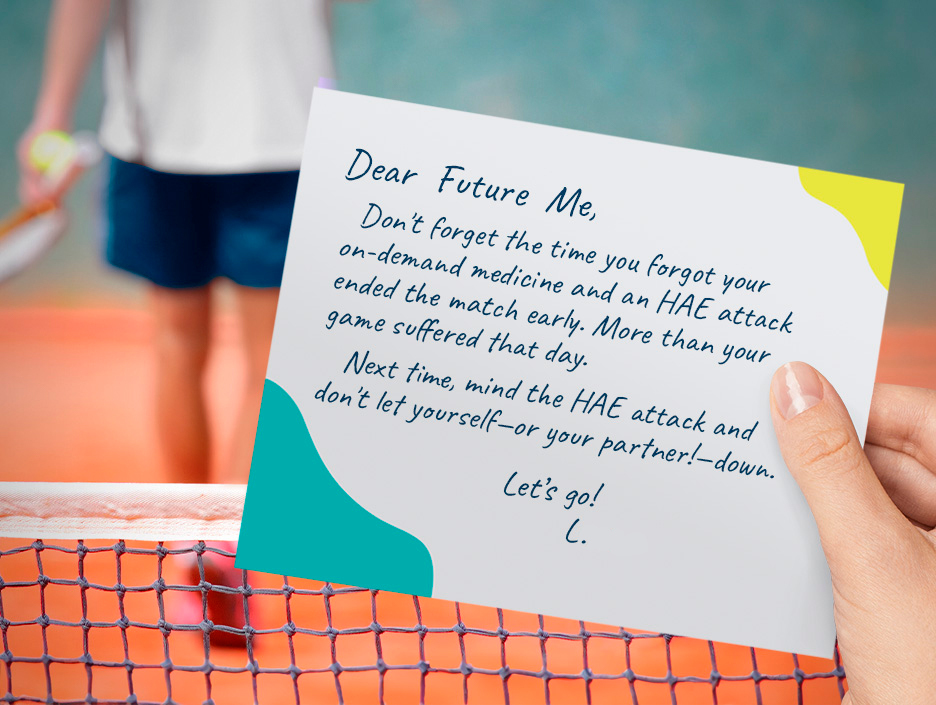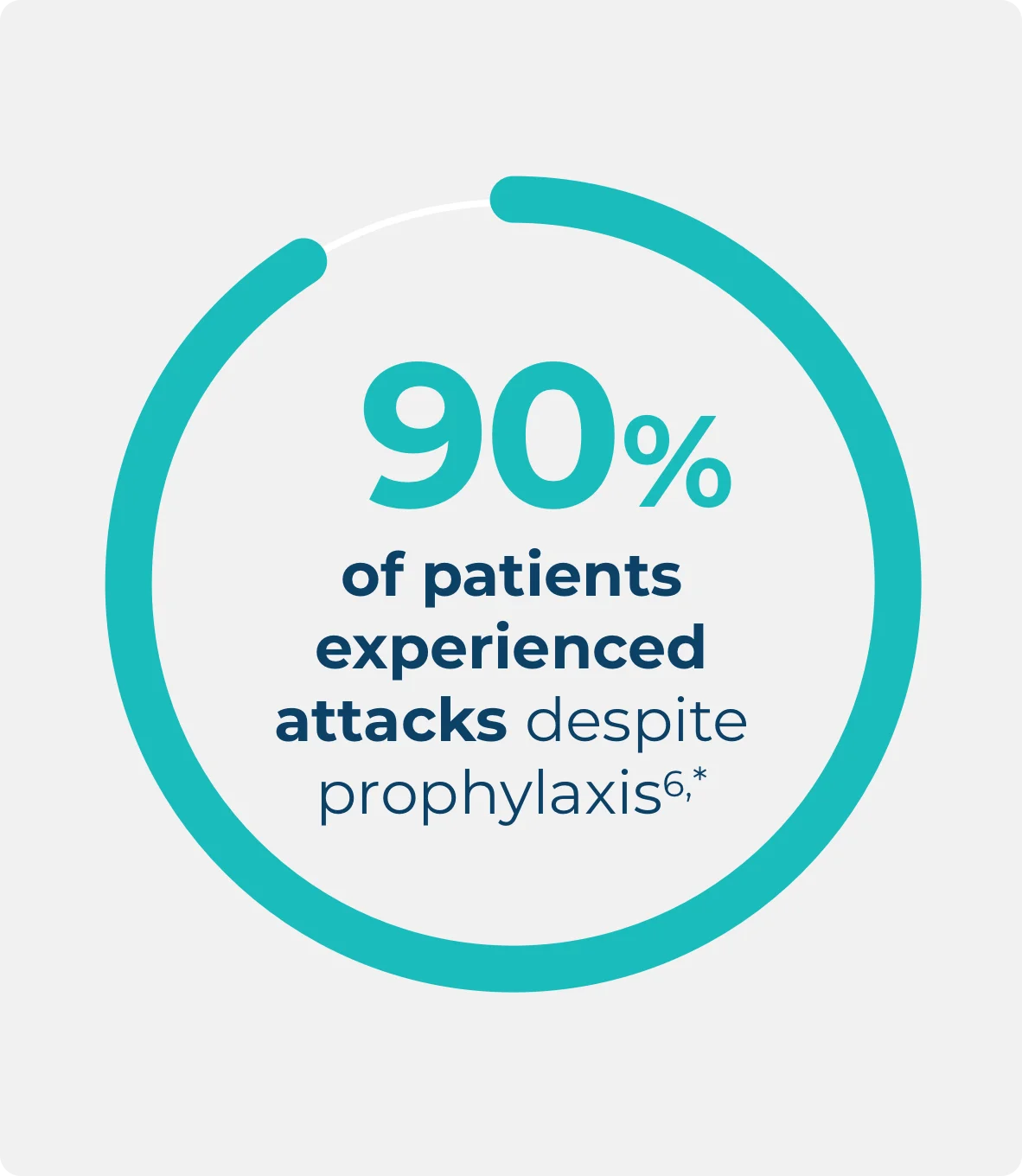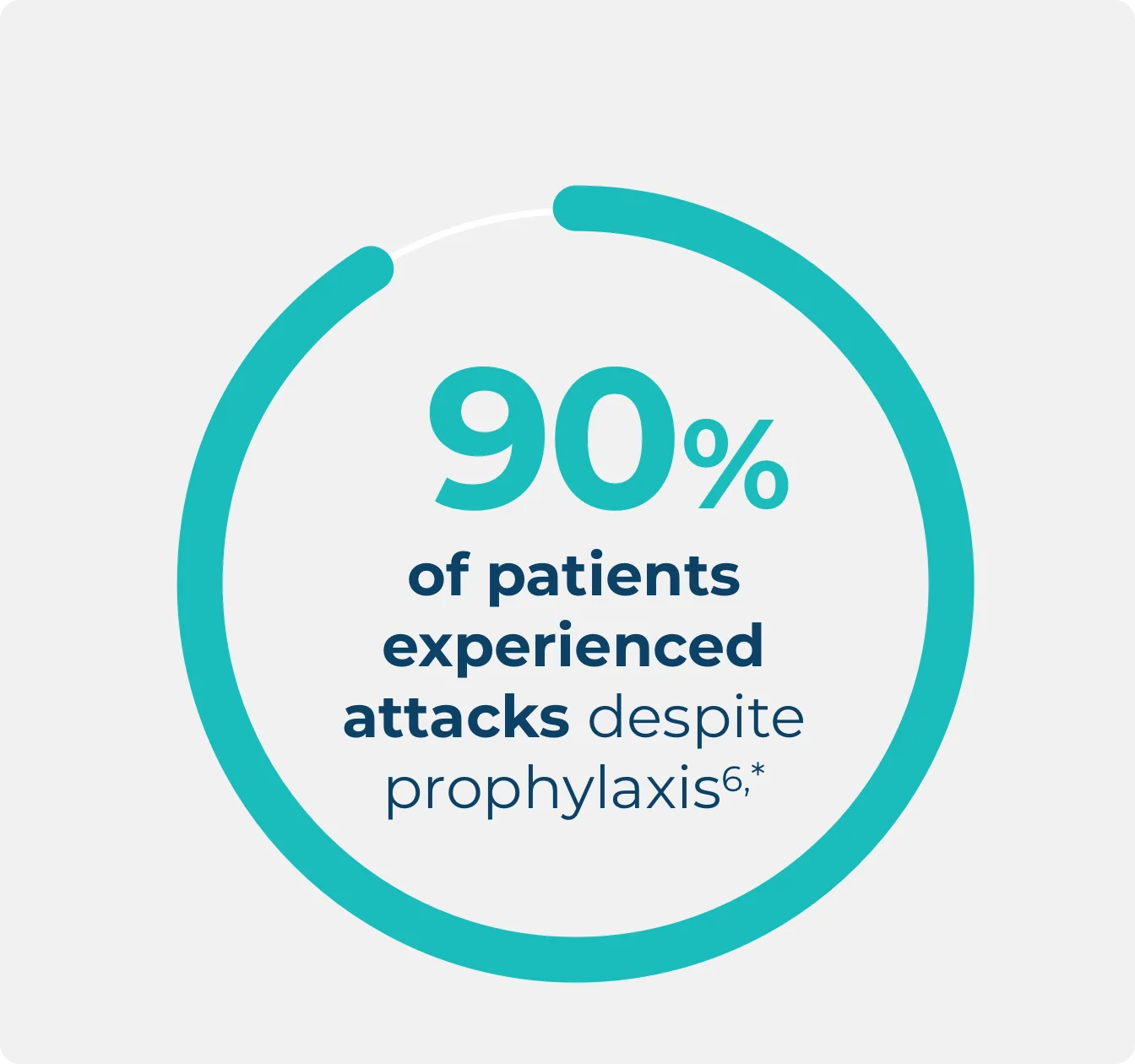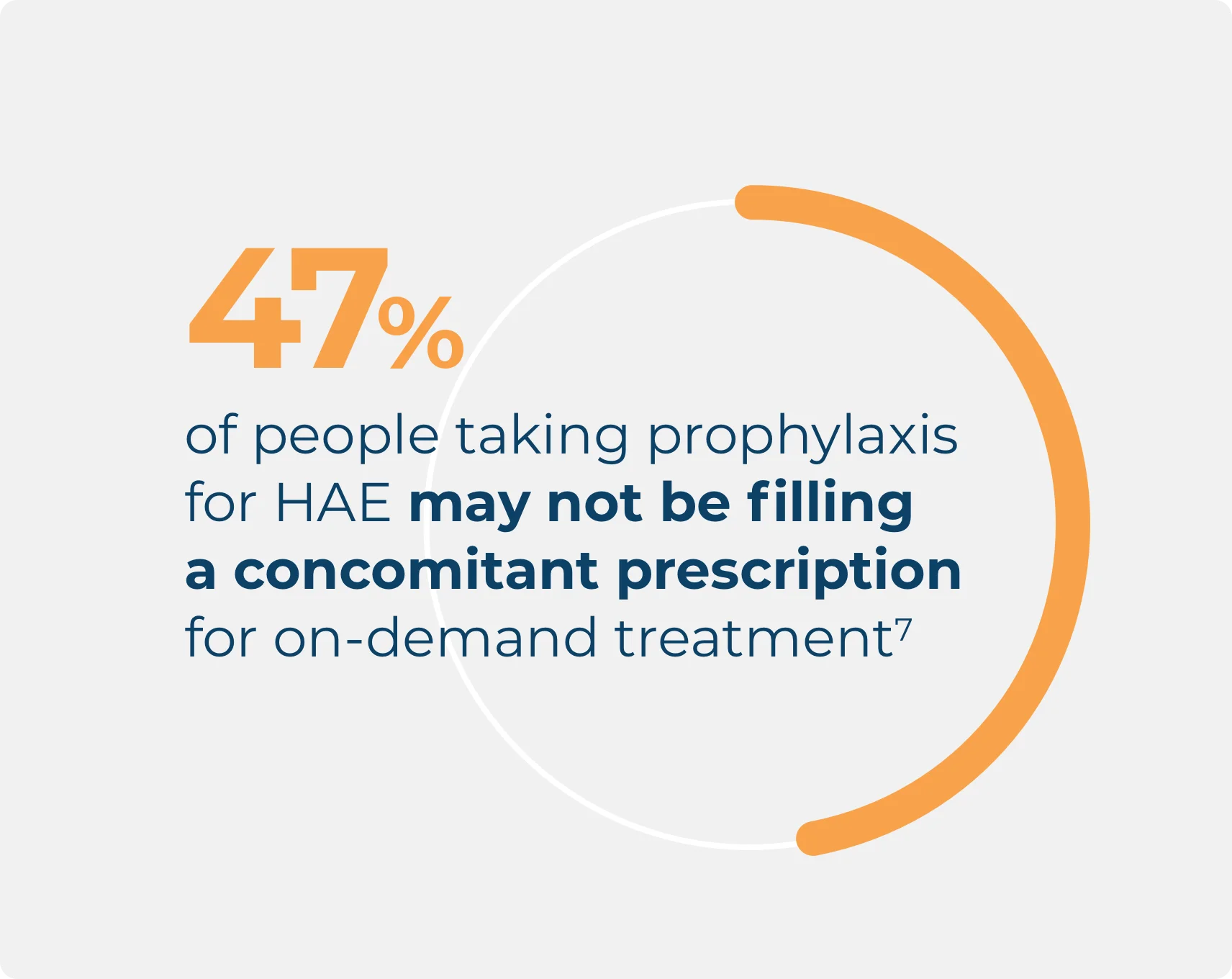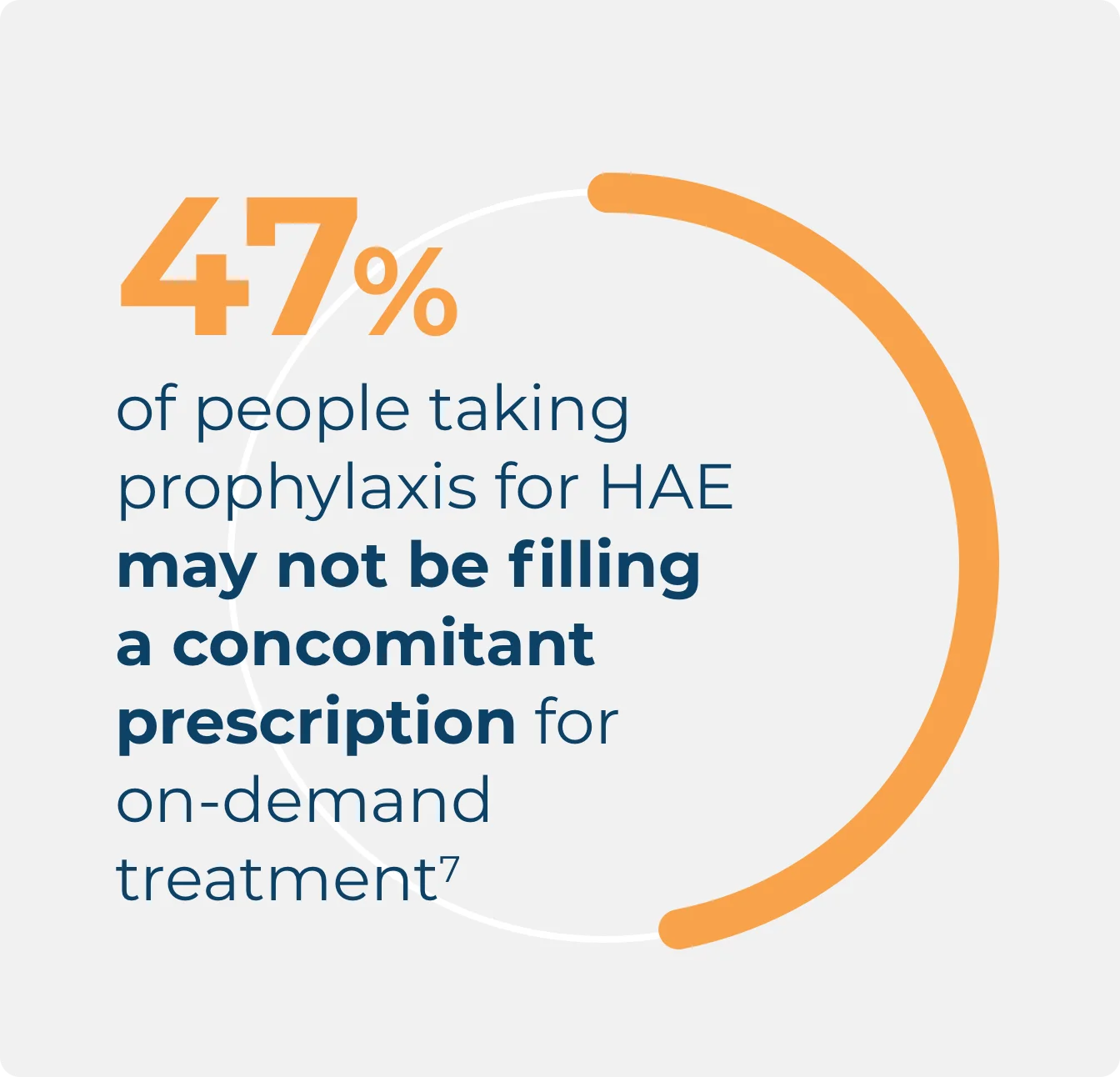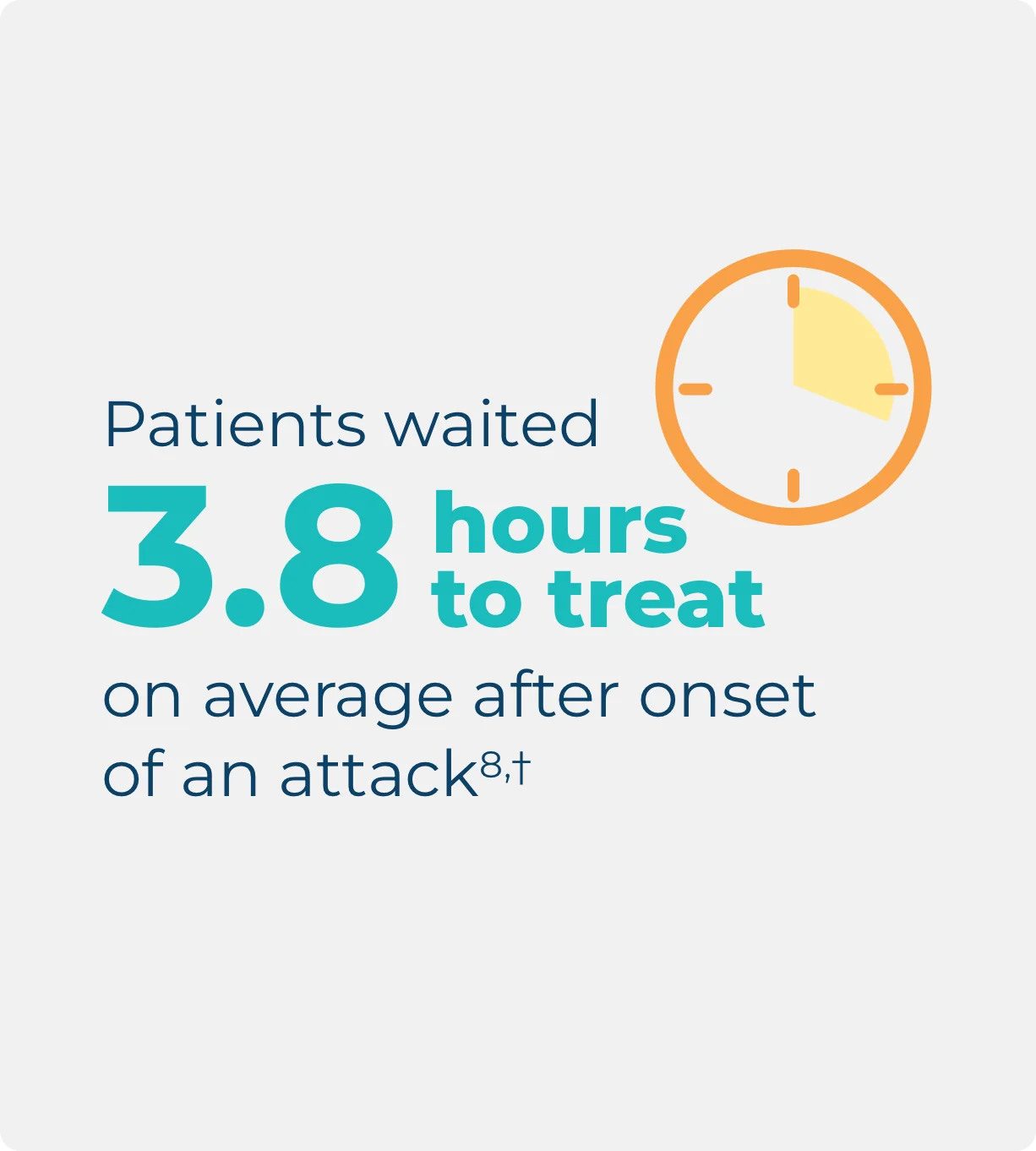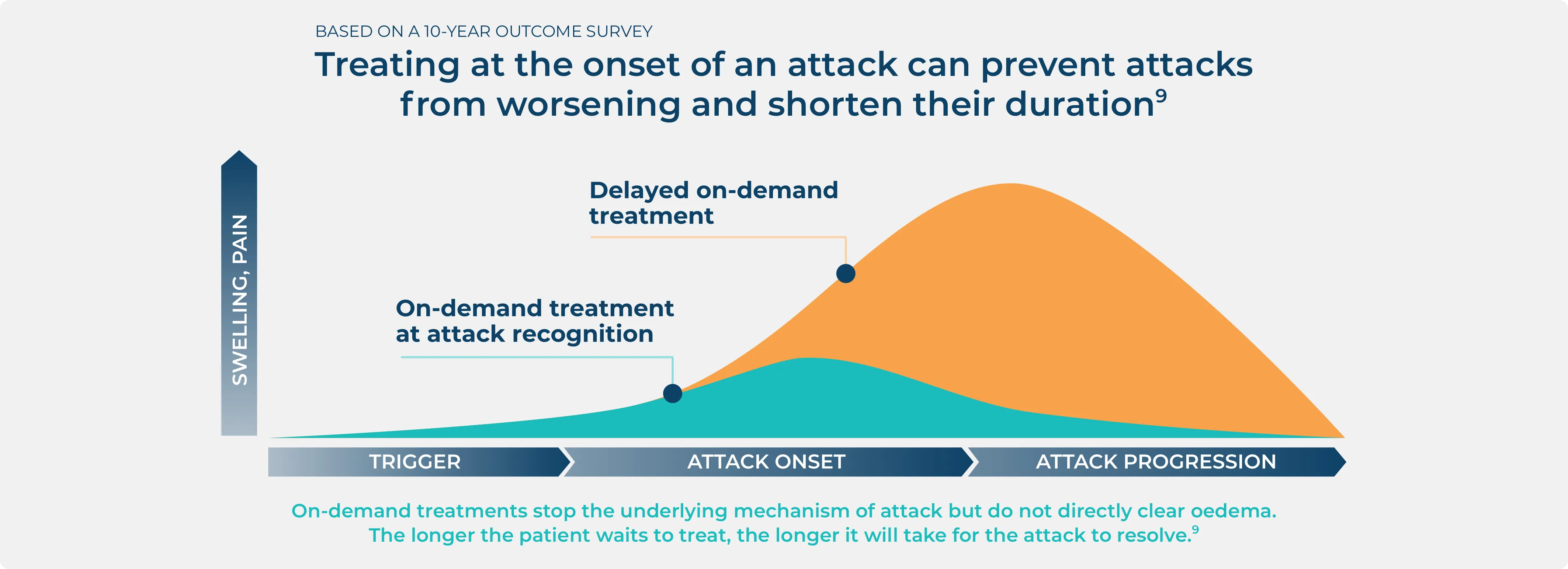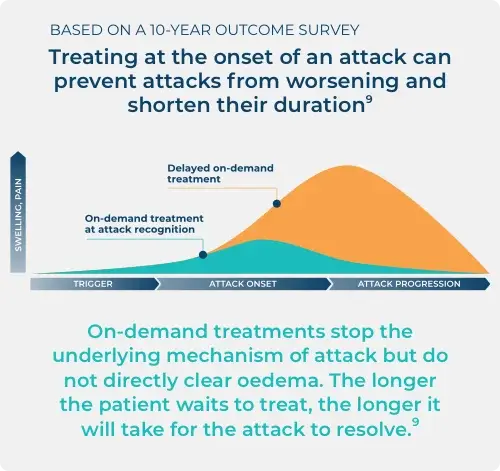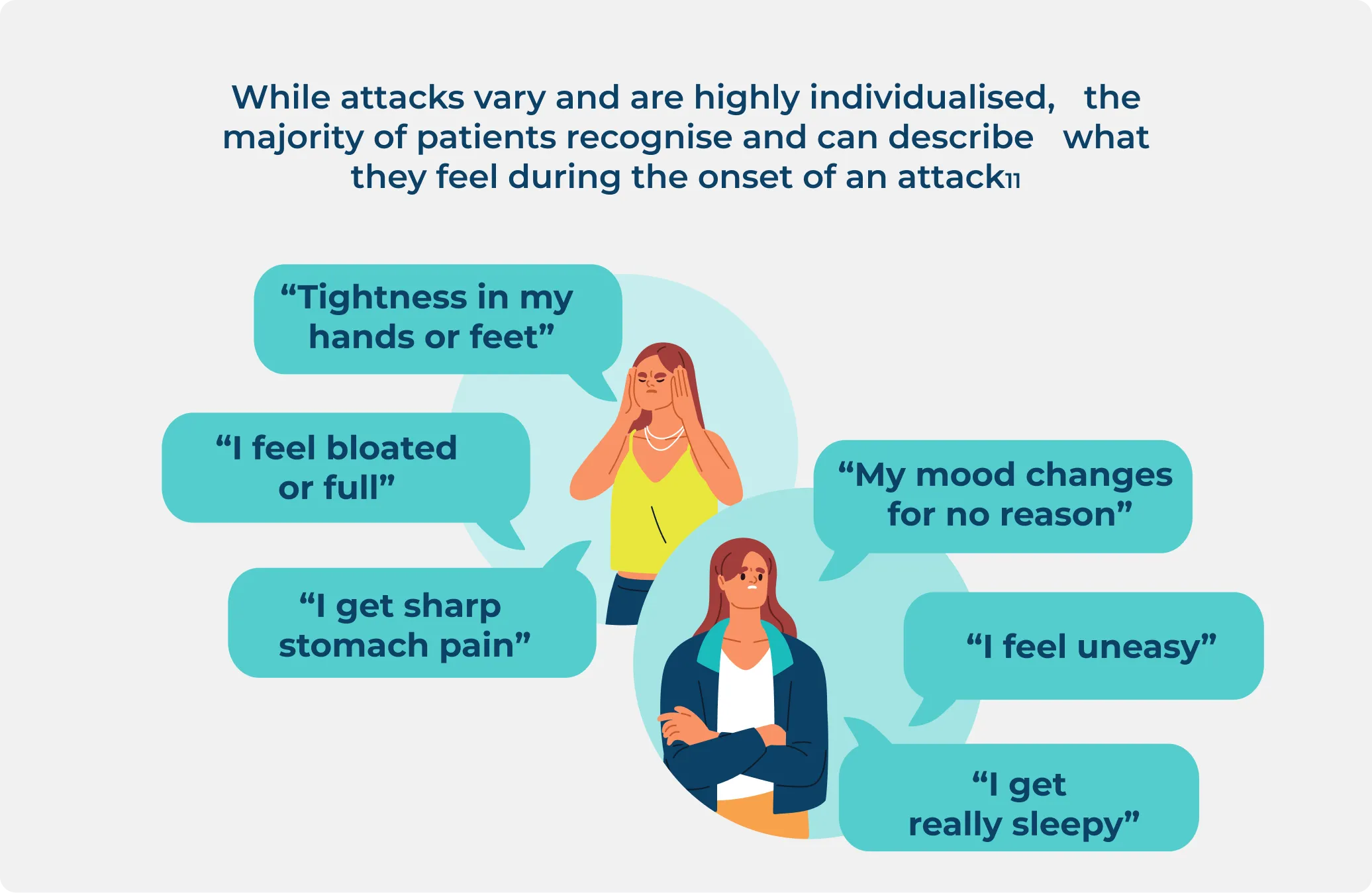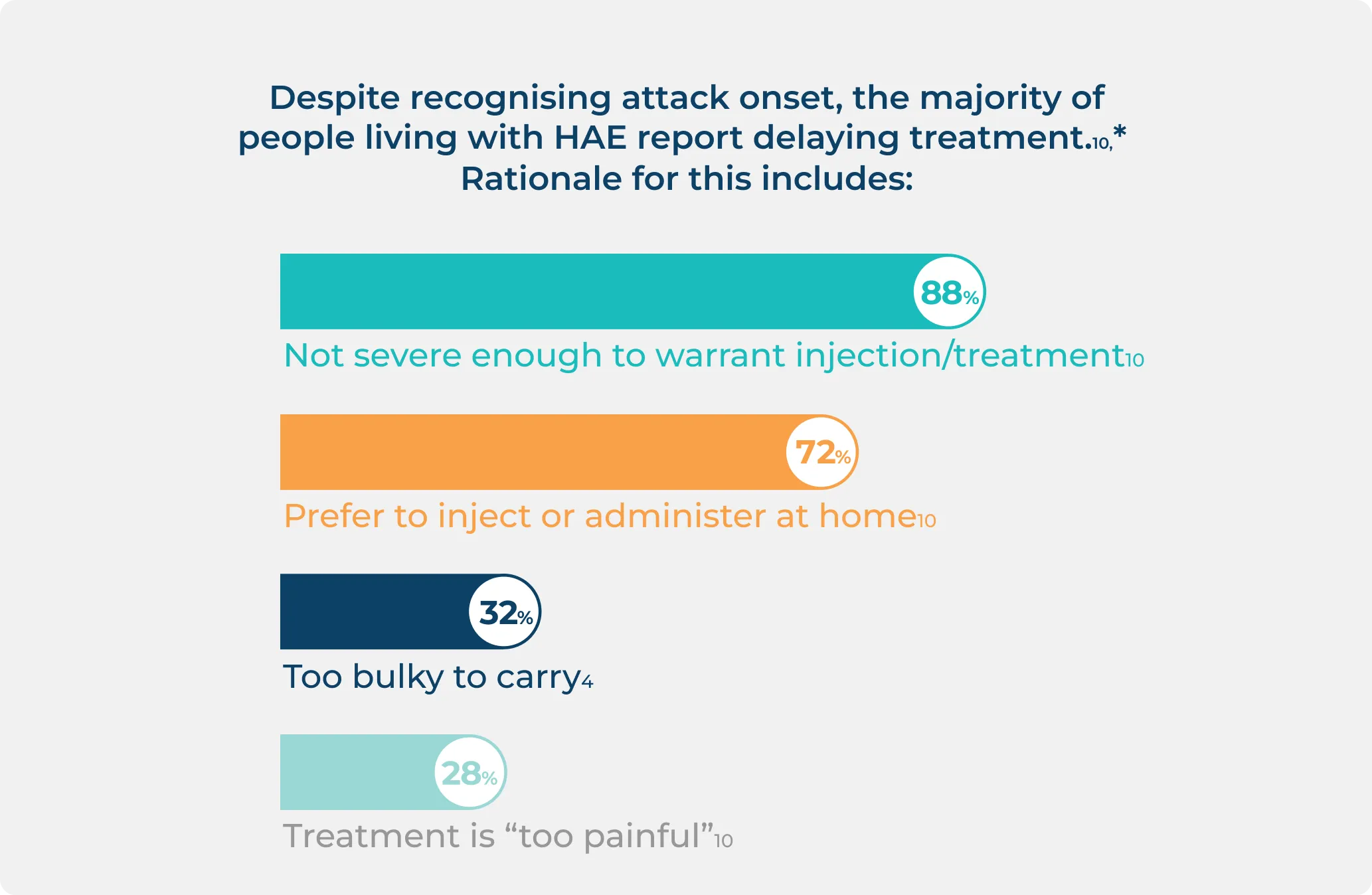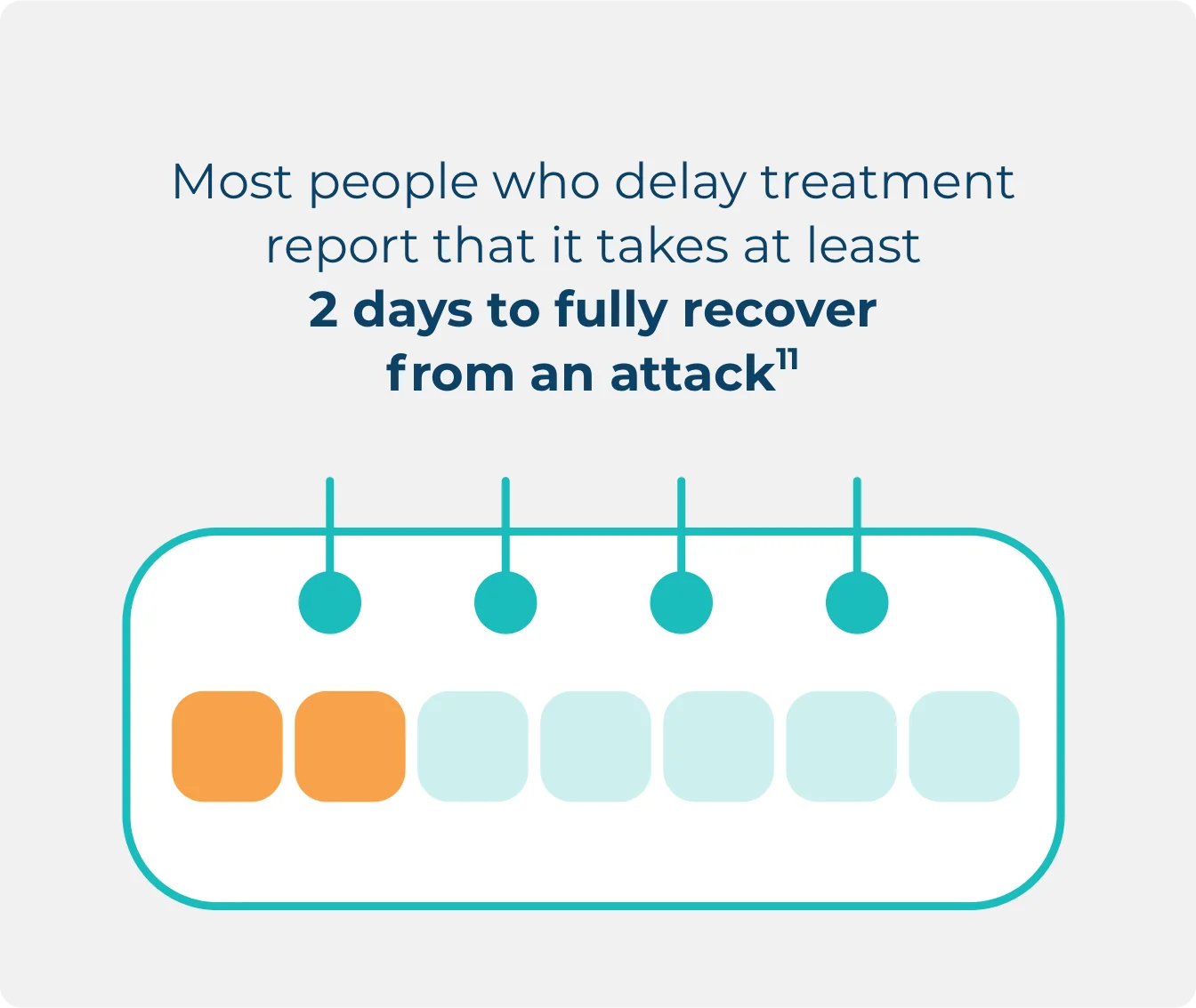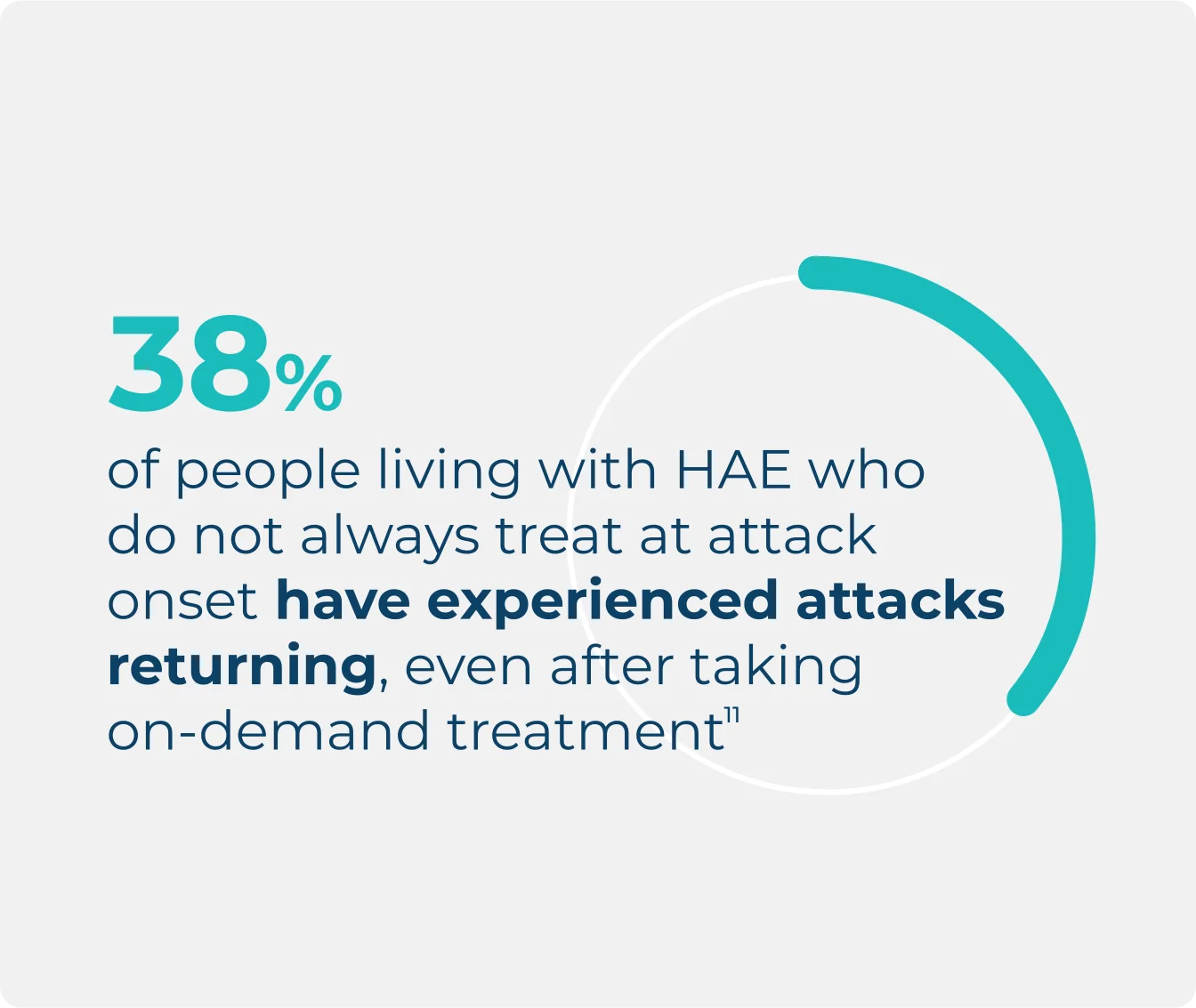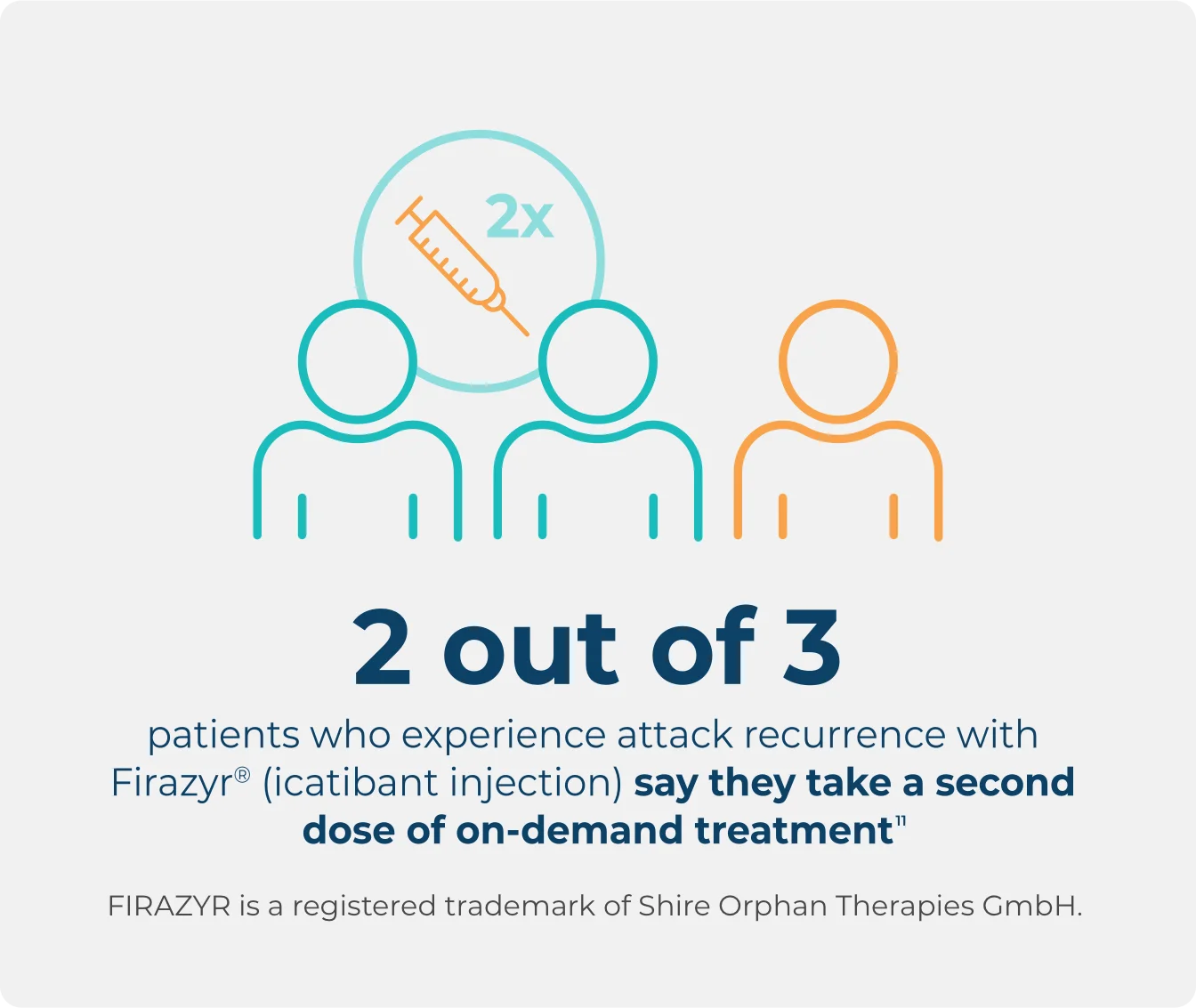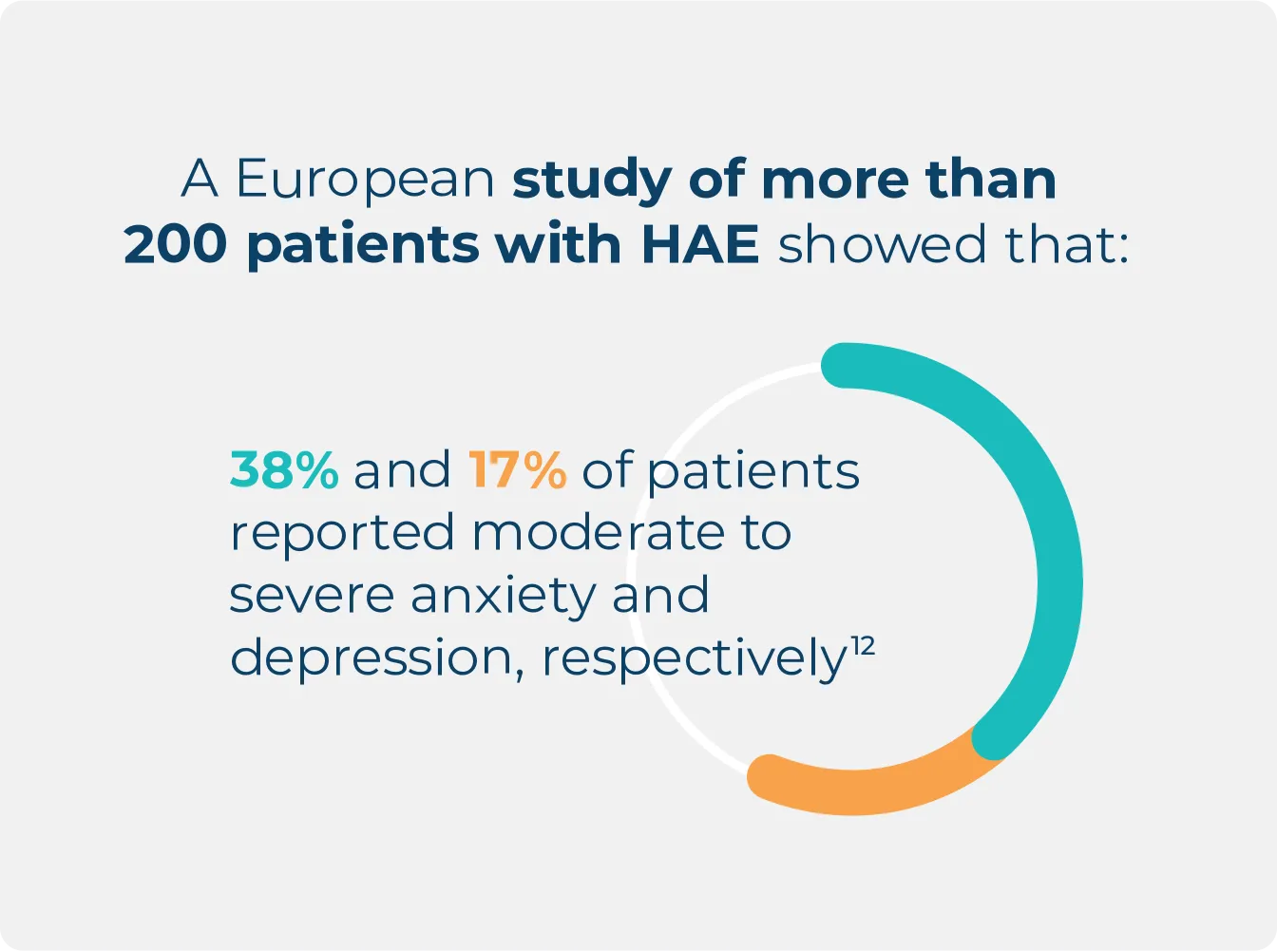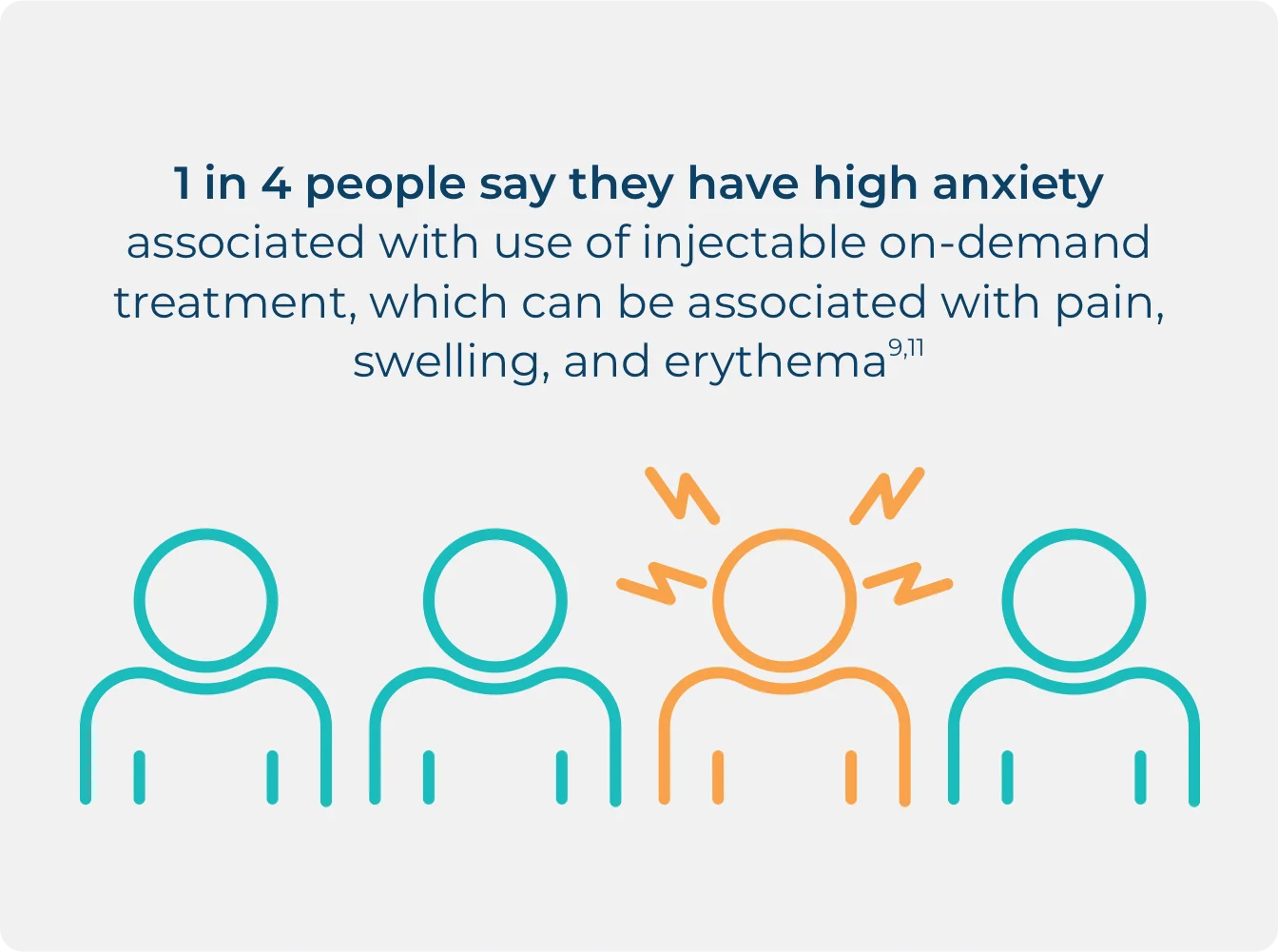How are your patients preparing for and deciding to treat HAE attacks?
Download the discussion guide.
View the guide
References: 1. US Hereditary Angioedema Association. What is Hereditary Angioedema (HAE)? Accessed July 25, 2023. https://www.haea.org/pages/p/what_is_hae
2. Maurer M, Magerl M, Betschel S, et al. The international WAO/EAACI guideline for the management of hereditary angioedema—the 2021 revision and update. Allergy. 2022;77:1961-1990. doi:10.1111/all.15214
3. Busse P, Christiansen SC, Riedl MA, et al. US HAEA Medical Advisory Board 2020 guidelines for the management of hereditary angioedema. J Allergy Clin Immunol Pract. 2021;1:132-150.e3. doi:10.1016/j.jaip.2020.08.046
4. Betschel S, van Kooten S, Heckmann M, Danese S, Goga L, Guilarte M. HAE patients decision to carry on-demand treatment when away from home. Abstract presented at: 13th C1-inhibitor Deficiency & Angioedema Workshop; May 4-7, 2023; Budapest,
Hungary. Allergy Asthma Clin Immunol. In Press.
5. Longhurst H, Bouillet L, Cancian M, et al. Hereditary angioedema attacks in patients receiving long-term prophylaxis: a systemic review. Presented at: APAAACI;
October 23-26, 2023; Singapore.
6. Anderson J, Soteres D, Tachdjian R, et al. Real-world outcomes in patients with hereditary angioedema prescribed lanadelumab versus other prophylaxis. Allergy Asthma Proc.
Published online September 18, 2024. doi:10.2500/aap.2024.45.240046
7. Riedl M, Banerji A, Manning M, et al. Treatment patterns and healthcare resource utilization among patients with hereditary angioedema in
the United States. Orphanet J Rare Dis. 2018;13(1):180. doi:10.1186/s13023-018
8. Christiansen S, O’Connor M, Ulloa J, et al. Delayed on-demand treatment of hereditary angioedema attacks: patient perceptions and
associated barriers. J Allergy Clin Immunol. 2024;153(2)Supplement:AB89. doi:10.1016/j.jaci.2023.11.297
9. Maurer M, Aberer W, Caballero T, et al. The Icatibant Outcome Survey: 10 years of experience with icatibant for
patients with hereditary angioedema. Clin Exp Allergy. 2022;52:1048-1058. doi:10.1111/cea.14206
10. Betschel SD, Caballero T, Jones DH, et al. The complexities of decision-making associated with on-demand
treatment of hereditary angioedema (HAE) attacks. Allergy Asthma Clin Immunol. 2024;20(1):43. doi:10.1186/s13223-024-00903-w
11. Data on File. KalVista Pharmaceuticals, Inc. 2023.
12. Mendivil J, Murphy R, de la Cruz M, et al. Clinical characteristics and burden of illness in patients with hereditary angioedema: findings from a multinational patient survey. Orphanet J Rare Dis. 2021;16:94.
13. Valerieva A, Van Kooten S, Heckmann M, et al. Patients delay treating hereditary angioedema (HAE) attacks with currently available, injectable, on-demand therapies. Abstract presented at: EAACI 2023 Hybrid Congress; June 9-11, 2023; Hamburg, Germany.
Allergy. In Press.
14. Maurer M, Aberer W, Bouillet L, et al. Hereditary angioedema attacks resolve faster and are shorter after early icatibant treatment. PLoS ONE. 2013;8(2):e53773. doi:10.1371/journal.pone.0053773
15. Longhurst HJ, Dempster J, Lorenzo L, et al. Real-world outcomes in hereditary angioedema: first experience from the Icatibant Outcome Survey in the United Kingdom. Allergy Asthma Clin Immunol. 2018;14:28.
doi:10.1186/s13223-018-0253-x


